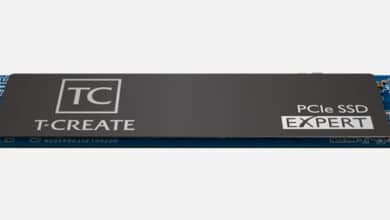
The semiconductor crisis is having an impact on pretty much every industry. This also includes the market segment of solid state drives (SSD), for example. As if the currently prevailing chip shortage wasn’t bad enough anyway, another gigantic problem has now been added at important Western Digital (WD) and Kioxia plants. Due to contaminated chemicals, any amount of flash memory has been unceremoniously destroyed. The companies speak of a total of 6.5 exabytes of data that is now ripe for hazardous waste.
Two plants in Japan affected
The year 2022 could certainly have started better for WD and Kioxia. Away from the chip crisis, which is slowing down production anyway, the two memory manufacturers currently have a completely different problem. At the center of it all are contaminated semiconductor manufacturing plants. These have not only ensured that a lot of clean-up work will have to be carried out first. On top of that, the two big tech companies now have to throw away gigantic amounts of memory. The whole thing has taken place in two Japanese plants.
Price cuts should thus be history
The problem is not only likely to have an immediate impact on WD and Kioxia. On top of that, we now most likely have to reckon with the fact that the recently announced price cuts around the storage products are probably passé for now. This should affect all products that rely on “NAND flash”. According to WD, these are the ones that are supposed to be contaminated. The problem is said to affect a total of 6.5 exabytes (6,500,000 terabytes). If you consider that this corresponds to about 13 percent of the planned production volume for the first quarter of 2022, the extent becomes really clear.
All flash memory is likely to be affected
The worst part of the misery is definitely the fact that the damage to the production goods will not only affect the prices of products from WD and Kioxia. Since the two manufacturers supply about one third of the NAND-based flash memories with their hardware, many other companies will probably also have to screw on the prices of their storage media. Trendforce experts believe that prices will probably rise by up to 10 percent.
Further problems in China
The major Asian production facilities do not seem to be under a good star at the moment. In addition to the two Japanese plants, WD and Kioxia must namely also complain about problems in China. The ongoing lockdown in certain regions there means that the company can only work with the handbrake on in the Middle Kingdom. Even if normal operations slowly but surely start up again on site, this will also have an impact.




No replies yet
Neue Antworten laden...
Neues Mitglied
Beteilige dich an der Diskussion in der Basic Tutorials Community →